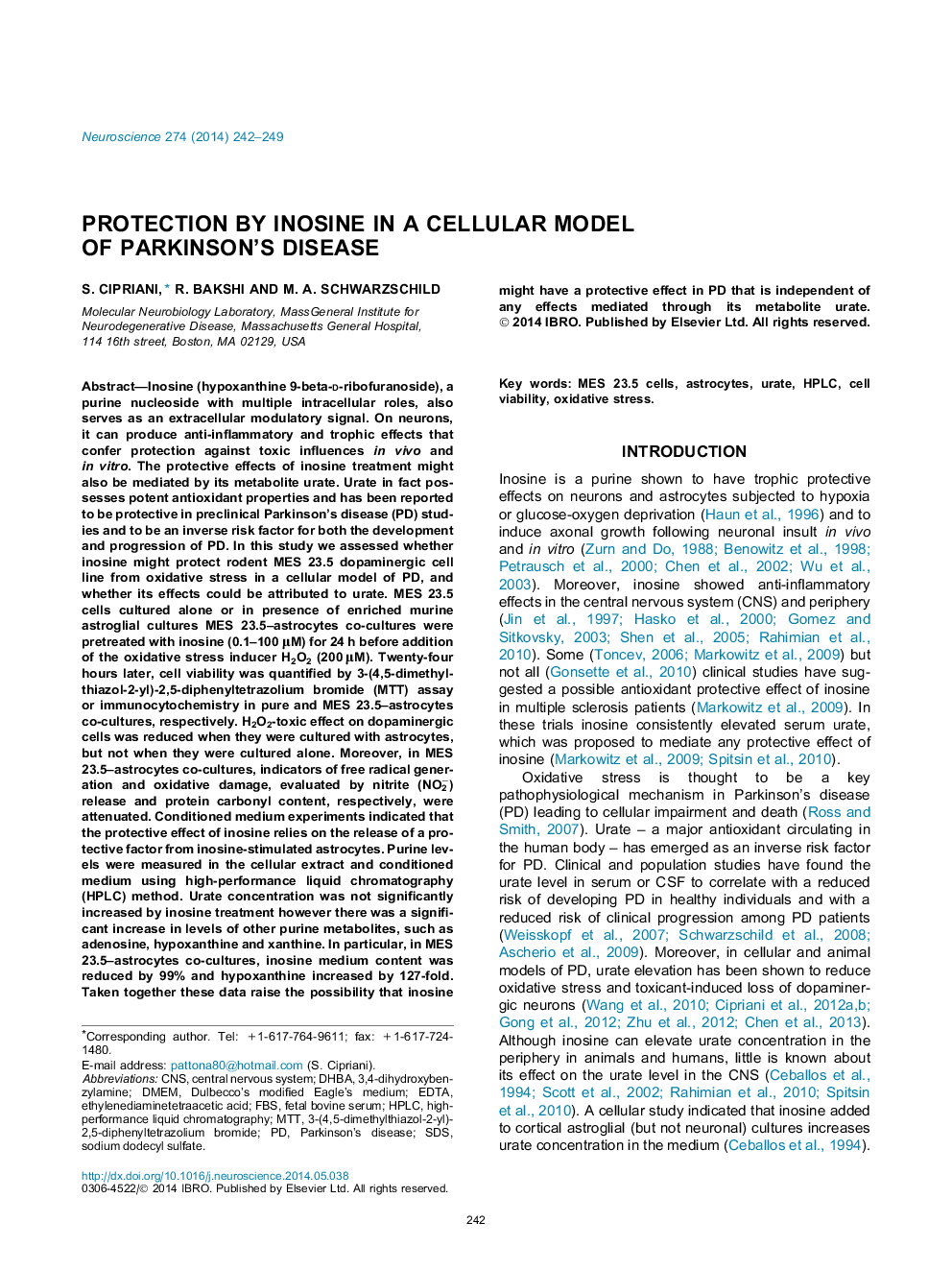| کد مقاله | کد نشریه | سال انتشار | مقاله انگلیسی | نسخه تمام متن |
|---|---|---|---|---|
| 4337637 | 1614802 | 2014 | 8 صفحه PDF | دانلود رایگان |
• Inosine protected dopaminergic cells subjected to oxidative stress.
• Inosine attenuated inductions of indicators of free radical generation and oxidative damage in this model.
• Protection by inosine required astrocytes in cultures.
• Protection by inosine appeared to be independent of urate.
Inosine (hypoxanthine 9-beta-d-ribofuranoside), a purine nucleoside with multiple intracellular roles, also serves as an extracellular modulatory signal. On neurons, it can produce anti-inflammatory and trophic effects that confer protection against toxic influences in vivo and in vitro. The protective effects of inosine treatment might also be mediated by its metabolite urate. Urate in fact possesses potent antioxidant properties and has been reported to be protective in preclinical Parkinson’s disease (PD) studies and to be an inverse risk factor for both the development and progression of PD. In this study we assessed whether inosine might protect rodent MES 23.5 dopaminergic cell line from oxidative stress in a cellular model of PD, and whether its effects could be attributed to urate. MES 23.5 cells cultured alone or in presence of enriched murine astroglial cultures MES 23.5–astrocytes co-cultures were pretreated with inosine (0.1–100 μM) for 24 h before addition of the oxidative stress inducer H2O2 (200 μM). Twenty-four hours later, cell viability was quantified by 3-(4,5-dimethylthiazol-2-yl)-2,5-diphenyltetrazolium bromide (MTT) assay or immunocytochemistry in pure and MES 23.5–astrocytes co-cultures, respectively. H2O2-toxic effect on dopaminergic cells was reduced when they were cultured with astrocytes, but not when they were cultured alone. Moreover, in MES 23.5–astrocytes co-cultures, indicators of free radical generation and oxidative damage, evaluated by nitrite (NO2−) release and protein carbonyl content, respectively, were attenuated. Conditioned medium experiments indicated that the protective effect of inosine relies on the release of a protective factor from inosine-stimulated astrocytes. Purine levels were measured in the cellular extract and conditioned medium using high-performance liquid chromatography (HPLC) method. Urate concentration was not significantly increased by inosine treatment however there was a significant increase in levels of other purine metabolites, such as adenosine, hypoxanthine and xanthine. In particular, in MES 23.5–astrocytes co-cultures, inosine medium content was reduced by 99% and hypoxanthine increased by 127-fold. Taken together these data raise the possibility that inosine might have a protective effect in PD that is independent of any effects mediated through its metabolite urate.
Journal: Neuroscience - Volume 274, 22 August 2014, Pages 242–249
